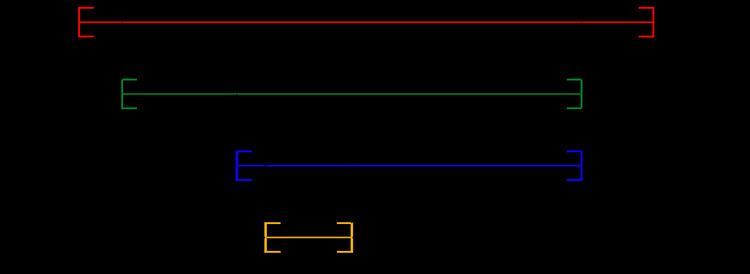 | ||
In mathematics, a sequence of nested intervals is understood as a collection of sets of real numbers
such that each set In is an interval of the real line, for n = 1, 2, 3, ..., and that further
In + 1 is a subset of Infor all n. In other words, the intervals diminish, with the left-hand end moving only towards the right, and the right-hand end only to the left.
The main question to be posed is the nature of the intersection of all the In. Without any further information, all that can be said is that the intersection J of all the In, i.e. the set of all points common to the intervals, is either the empty set, a point, or some interval.
The possibility of an empty intersection can be illustrated by the intersection when In is the open interval
(0, 2−n).Here the intersection is empty, because no number x is both greater than 0 and less than every fraction 2−n.
The situation is different for closed intervals. The nested intervals theorem states that if each In is a closed and bounded interval, say
In = [an, bn]with
an ≤ bnthen under the assumption of nesting, the intersection of the In is not empty. It may be a singleton set {c}, or another closed interval [a, b]. More explicitly, the requirement of nesting means that
an ≤ an + 1and
bn ≥ bn + 1.Moreover, if the length of the intervals converges to 0, then the intersection of the In is a singleton.
One can consider the complement of each interval, written as
Higher dimensions
In two dimensions there is a similar result: nested closed disks in the plane must have a common intersection. This result was shown by Hermann Weyl to classify the singular behaviour of certain differential equations.
